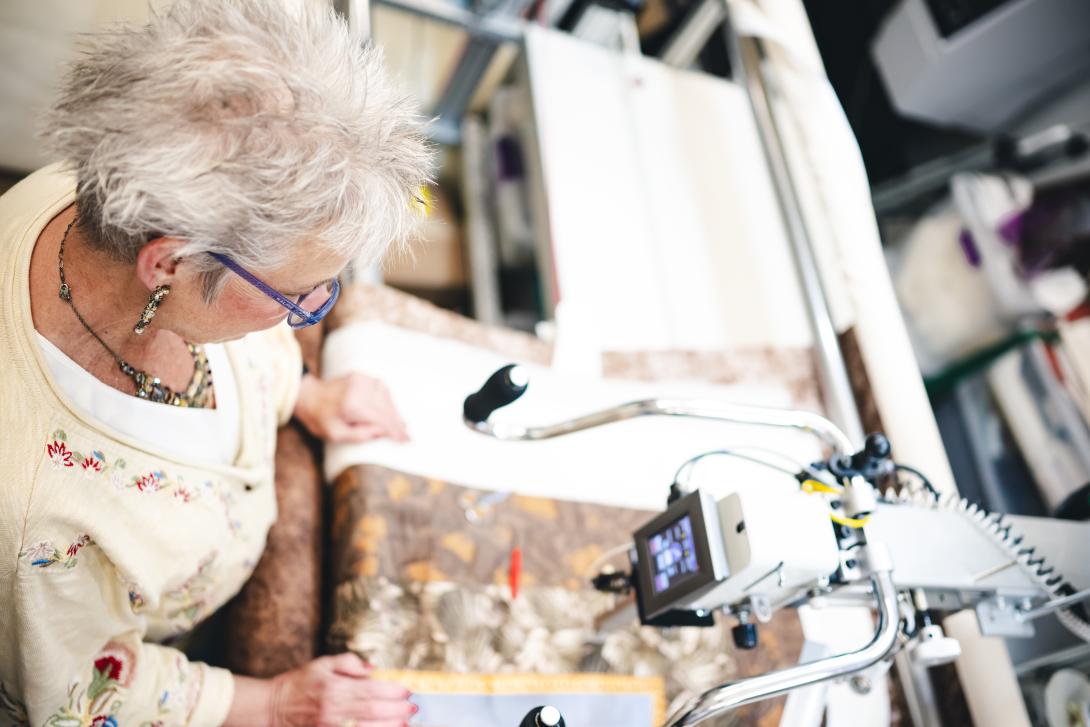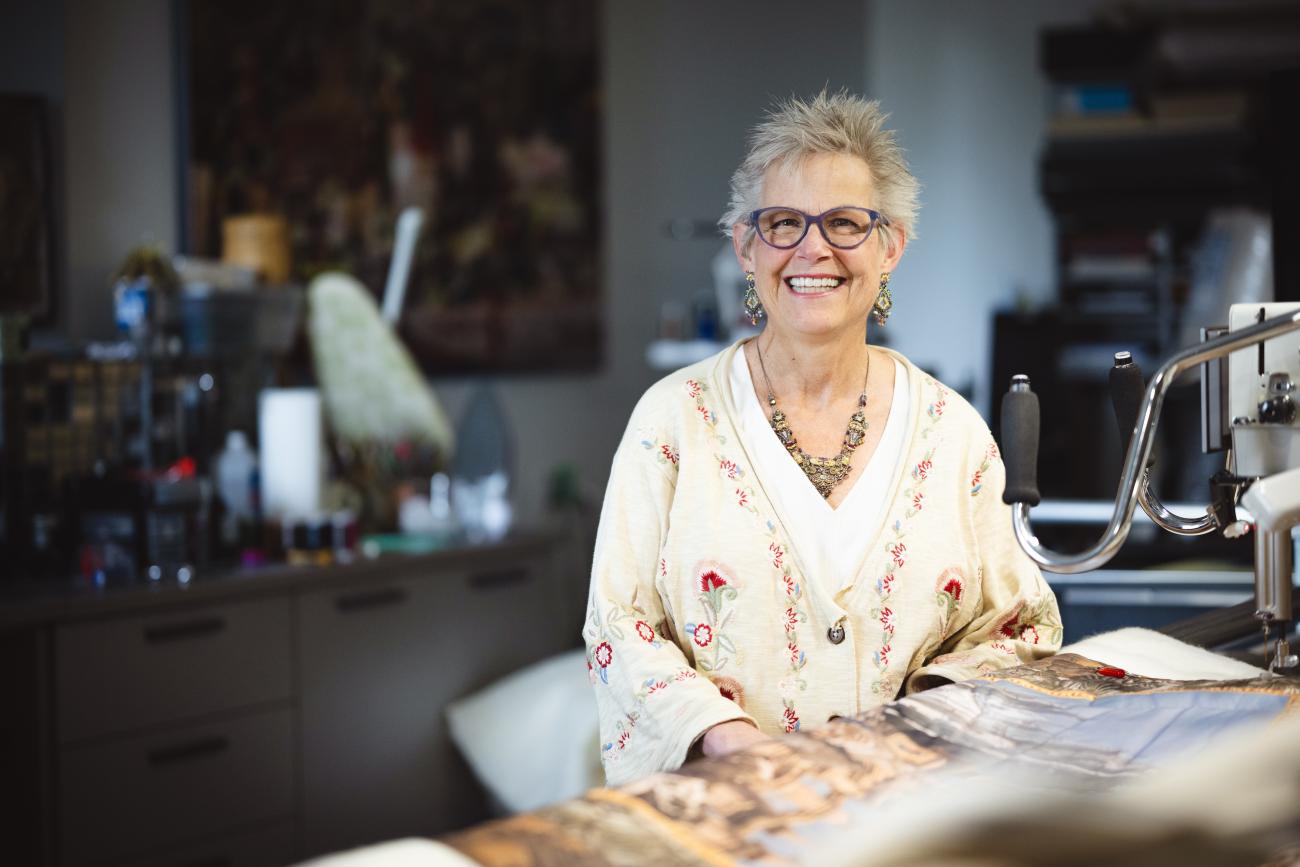Binding Photography and Textiles
Anna Chupa combines photography montages with textiles to create unique quilts
Material meets the natural world in Anna Chupa’s studio. Chupa, professor of design and associate chair of the department of art, architecture, and design, combines photography montages with textiles to create unique quilts.
Botanical quilts are one of Chupa’s ongoing projects. Rich colors splash across the surface of her fabric, which is printed with a collection of various flowers that have been manipulated in Photoshop. When creating the artwork she says, “The Photoshop work is so meditative for me.”
Chupa is also creating textile designs that combine scans from electron microscopy and juxtaposing it with photography and macro photography of the same species.
“The scanning electron microscope is so much fun to work with,” Chupa says, “and so interesting to work with, to see what you reveal underneath.” Leslie O'Brien, scanning electron microscopy (SEM) manager, renders the scans and Robert Booth, professor and chair of the department of earth and environmental sciences (ESS), provides herbarium specimens.
But that’s not the only collaborative project on which Chupa is working. She and Deirdre Murphy, professor of design in the department of art, architecture, and design, have a show planned for the Nurture Nature Center in Easton in 2027. This exhibition will showcase both of their creative work where art meets the biological sciences.
Another layer of Chupa’s work are her art quilts of the Camino de Santiago, a medieval pilgrimage across northern Spain. Her quilts document the landscape and architecture of the Camino. She hiked the Camino twice, the first time in the summer of 2022 and then again in June 2024, carrying her cameras, photography lenses, and back-up drives along with her.
Chupa was interested in learning why people do a pilgrimage and “how spirituality is revealed on the path along the way.” These quilts are like altars themselves and reminiscent of her photographs of altars created by New Orleans Voodoo Priestess Miriam Williams and her quilts inspired by Islamic architecture and tiles of southern Spain.
In collaboration with Michael Chupa, she is creating quilts that combine biomorphic forms with renderings of cellular automata. Michael Chupa generates the mathematical code that is superimposed on her macro photography.
Chupa explains the equation that informs the design: “It's a two-dimensional grid of cells that are either on or off one color or another color based on the colors in their neighborhood and based on certain rules that are expressed mathematically.” This intersection of art and math reveals patterns seen in nature.

Sandwiching backing fabric, batting, and a quilt top, Chupa creates intricate designs with a longarm quilting machine. “The advantage of working with a machine like this is that you drive it, and it's using gross motor skills rather than pushing your fabric through a sewing machine,” Chupa explains. The result is densely quilted artwork with embroider-like patterns—layers that bind architecture and nature.

